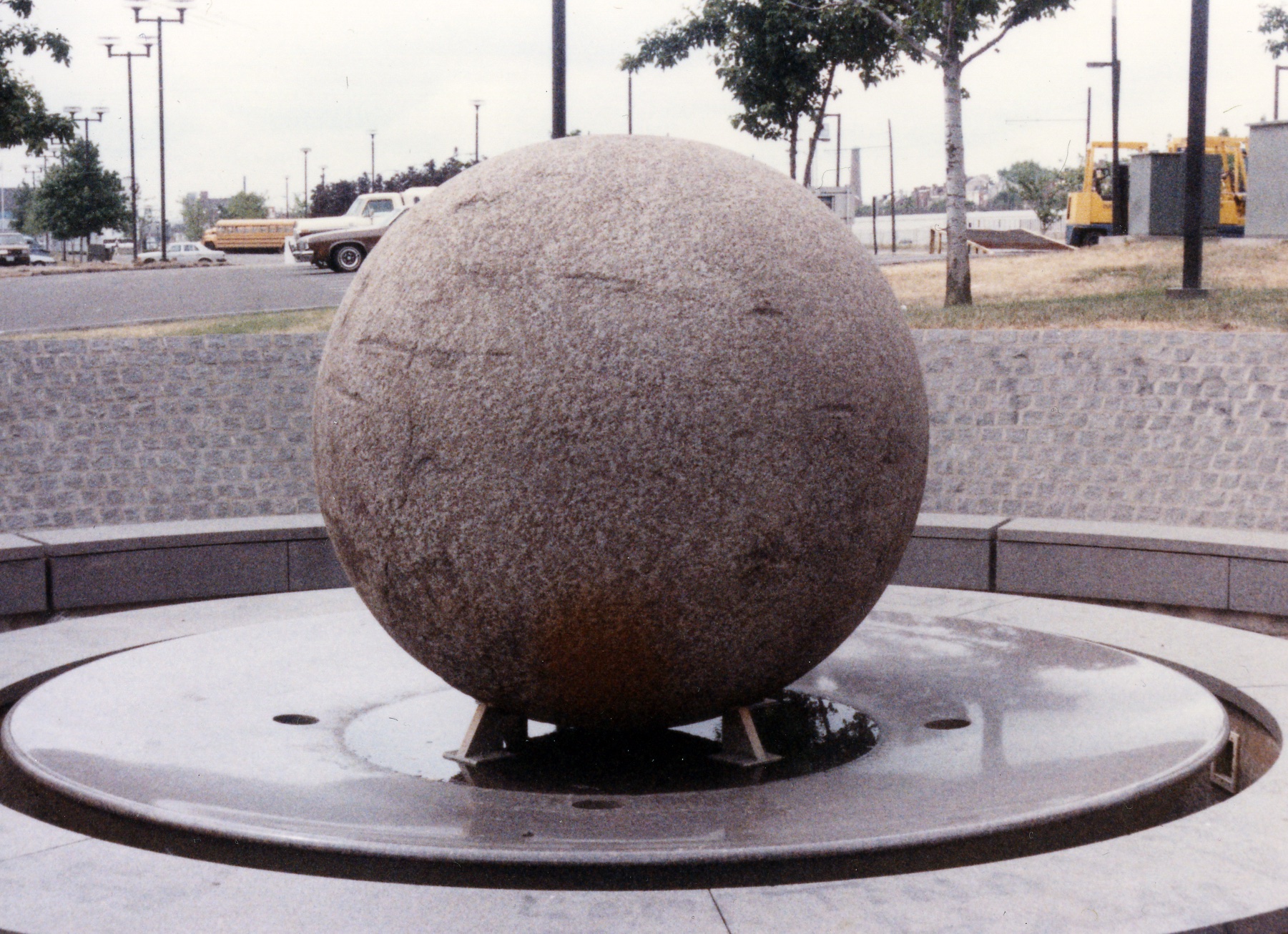The sculpture garden featured significant objects from diverse cultures, acquired and installed by the Association for Public Art over several years.
The International Sculpture Garden was conceived by the Fairmount Park Art Association (now the Association for Public Art) in the 1960s as part of the anticipated U.S. Bicentennial celebration. The open-air installation was intended to celebrate and demonstrate the impact of other cultures on the American experience with a focus on ancient and ethnographic artworks. The sculpture garden featured significant objects from diverse cultures, acquired, and installed by aPA over several years. While all the sculptures have since been placed in storage, Five Water Spouts and Lintel remains on site.
Sculptures Included in the International Sculpture Garden:

House Post (Totem) (1850). Native Americans of the northwest Pacific coast carved several different kinds of cedar totem poles. Inside the house, carved poles supported the roof. Outside, or attached to the front of the house, were frontal or memorial poles carved with mythical figures or symbols of the family. A third type of pole served as a coffin. The totem that is part of the International Sculpture Garden (acquired with support from the Knollbrook Trust) is a central house pole. It belonged to the Kwakiutl of the coastal lands around Queen Charlotte Strait. The iconography includes a bird, a copper coin (symbol of wealth), and a grizzly bear.

Five Water Spouts and Lintel (12th-13th century). As long ago as the eighth century, temples expressing Hindu and Buddhist religious beliefs appeared on the Indonesian islands of Java and Sumatra. Many of the temple sites in eastern Java had pools for ritual bathing where the water flowed through carved stone spouts. In 1979 the Fairmount Park Art Association (now the Association for Public Art) acquired five of these spouts as well as a frog figure and a lintel, and the Mabel Pew Myrin Trust supported their installation at the Sculpture Garden. Three of the spouts resemble a tiger, a ram, and an elephant. Two are makaras, mythical creatures that appear in Indian and Indonesian art. The overhead lintel shows a kala, which was thought to be both a ferocious and a protective force: a visitor who passed through a kala gateway was symbolically devoured and reborn.

Spheres (300-1525). Pre-Columbian stone spheres have been discovered at sites in Central America, Puerto Rico, and Mexico. The largest come from the southern Pacific coast of Costa Rica, where some reach eight feet in diameter and exceed 16 tons in weight while deviating less than a quarter-inch from perfect roundness. To shape such a monolith with primitive tools was a prodigious feat; the stone, moreover, had to be transported by river from outcrops in the mountains. Small spheres were placed in graves; larger ones were set on platforms or arranged in patterns that suggest astronomical alignments. The two spheres at the International Sculpture Garden are from a site near Palmar Sur in the delta of Costa Rica’s Disquis River. The smaller one weighs 9,000 pounds, the larger one almost 24,000. The spheres were brought to Philadelphia with the cooperation of the Costa Rican government.

Mangbusucks (1695). To flank the approaches to the tombs of eminent people, Koreans carved memorial stone figures known as mangbusucks. The two in the International Sculpture Garden, dressed in ceremonial robes and holding scrolls, represent scholar-officials. They were carved for the tomb of Oh Ryong Suh, a court official who advanced to the rank of vice-minister before his death in 1694. These figures, which together weigh almost 3 tons, were a gift to the Fairmount Park Art Association (now the Association for Public Art) from the International Cultural Society of Korea and the Korean Association of Greater Philadelphia.

Nandi (1500). The name Nandi, which means “happiness,” designates the sacred bull belonging to Shiva, the Hindu god of creative power. In traditional Indian sculpture Shiva is often shown mounted on or leaning against the animal. As a symbol of Shiva, the Nandi represents power, virility, joy, and delight, as well as a controlled potential for destructiveness. When carved as a free-standing figure, the Nandi is always shown in a resting position that emphasizes the calmer aspect of its power. Nandi images are found in abundance at Shiva temples. Royal patrons often vied with one another for the honor of creating the most massive Nandi figure. The largest examples in India are twice the size of the 6′, 7.5 ton Nandi in the Sculpture Garden. This Nandi, however, is the largest ever to leave India. In 1969 the Association purchased it with the cooperation of the Indian government and Prime Minister Indira Gandhi. The work was rededicated in 1997 in honor of the 50th anniversary of India’s independence.